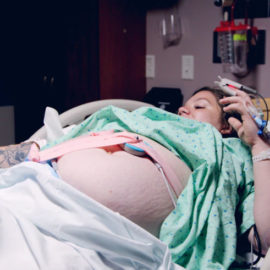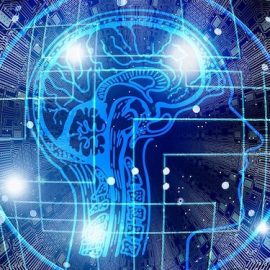

This article is an excerpt from the Shortform book guide to "Glucose Revolution" by Jessie Inchauspé. Shortform has the world's best summaries and analyses of books you should be reading.
Like this article? Sign up for a free trial here.
What happens in your body when your blood concentration of glucose spikes and then falls rapidly? What are the dangers of frequent blood sugar spikes?
Glucose spikes happen when the glucose concentration in our body suddenly increases (and then dips) after we eat. In the short term, glucose spikes can make us feel dizzy, nauseous, and exhausted. In addition, they can cause excess sweating, heart palpitations, stress, food cravings, and brain fog.
Keep reading to learn about what happens when your blood sugar spikes.
Glucose Spikes on a Molecular Level
Glucose concentration is typically measured in milligrams of glucose per deciliter of blood (mg/dL). The concentration of glucose in our bodies shouldn’t increase by more than 30 mg/dL after we eat—anything above that is considered a glucose spike. Glucose levels are a good measure of our overall health because they affect every system in our body.
Glucose concentration is typically measured in milligrams of glucose per deciliter of blood (mg/dL). The concentration of glucose in our bodies shouldn’t increase by more than 30 mg/dL after we eat—anything above that is considered a glucose spike.
| Why Current Blood Sugar Tests May Not Be Effective Enough Because glucose levels are important indicators of many health conditions, tests that measure glucose are a common part of regular doctor’s visits. Your doctor will most likely want to test your glucose during your yearly exam if you’re 45 years or older, you’re overweight, you have a family history of diabetes, or you have heart disease, high blood pressure, or high cholesterol. Despite glucose spikes over 30 mg/dL specifically being an important contributor to many health issues, the tests that doctors most commonly use to determine your risk of glucose-related diseases (like insulin resistance and diabetes) don’t measure glucose levels based on glucose spikes. Instead, they measure your fasting levels of glucose (the glucose concentration in your body when it’s at its lowest, as in when you first wake up in the morning) or your hemoglobin A1C (your average glucose levels across three months). Some argue that these tests are too limited because for their results to be abnormal, your metabolism must have already sustained significant damage. Your peak blood sugar levels (about one hour after eating) are better indicators of underlying insulin resistance, which is a primary contributor to type 2 diabetes and other metabolic issues. |
In her book Glucose Revolution, biochemist Jesse Inchauspé explains what happens when your blood sugar spikes and then falls rapidly. According to Inchauspé, the more frequently you endure glucose spikes of 30 mg/dL or above after eating, the likelier you are to experience the following problems on a molecular level:
Overloaded Mitochondria and Free Radicals
Inchauspé states that when we experience a glucose spike, our mitochondria become overloaded. M
itochondria are responsible for turning glucose into energy in our cells. This system works well when the amount of glucose our mitochondria receive matches the amount of energy our body needs. However, mitochondria overloaded with too much glucose can’t produce energy efficiently.
(Shortform note: Recent research suggests that the harmful effects of high glucose levels on mitochondria may relate to glucose’s role in decreasing the amount of polyunsaturated fatty acids (PUFAs) in mitochondrial membranes. PUFAs perform various functions for mitochondria, including contributing flexibility to their membranes. In one study, experiments on mice found that excess glucose was used to form other types of fatty acids instead of PUFAs. These other fatty acids weren’t as flexible as PUFAs, which put stress on the mitochondrial membranes and made them less efficient.)
Additionally, having overloaded mitochondria leads to the release of free radicals, which are small molecules that cause damage throughout the body.
(Shortform note: Free radicals are dangerous molecules because they’re missing an electron, which makes them unstable. Most molecules have an even number of electrons, but free radicals have an odd number—to even their number of electrons, they often take one from other molecules in your cells, causing damage to those cells.)
Oxidative Stress
According to Inchauspé, our bodies can handle a certain number of free radicals, but repeated glucose spikes over time can produce so many that we enter a state called oxidative stress. Our mitochondria become less efficient, and we have less energy. Without the proper fuel, our organs can’t function as effectively, and we struggle with frequent exhaustion.
(Shortform note: The term oxidative stress derives from the fact that most free radicals contain oxygen. The chemical reactions that free radicals cause in the body with their odd number of electrons are called oxidation. Antioxidants—molecules that can offer an electron to a free radical and remain stable—are the body’s solution for this. Damage to our cells and organs happens when there are more free radicals than the antioxidants in our body can handle. Antioxidants in your diet come from foods like berries, dark leafy greens, nuts, and fish.)
Glycation
Glycation is another process that frequent glucose spikes exacerbate. It happens when glucose molecules touch other molecules in the body. Glucose damages the other molecules and literally cooks and browns our insides. Once a molecule is glycated, it’s damaged forever. This process is the main reason why we age and our organs decline, eventually leading to death. It’s unavoidable, but the speed of the process can be increased or decreased. Glucose spikes speed glycation up since more free glucose molecules are administered to the body at once.
| Advanced Glycation End Products Glycation damages the body when it forms advanced glycation end products (AGEs), which form when fat or protein combines with sugar in the bloodstream. AGEs are dangerous compounds: When they accumulate too quickly, the body can’t get rid of them, and they eventually lead to oxidative stress, inflammation, and various diseases. However, a healthy body can eliminate them with antioxidants and enzymes before they cause too much damage. Eating too much glucose can speed up glycation and lead to the build-up of AGEs, as Inchauspé states, but that’s not the only way this happens—we also consume secondary AGEs in the cooked food we eat. Foods cooked with dry heat using methods like grilling, barbecuing, roasting, baking, toasting, and frying contain AGEs. When we consume too many, they accumulate faster than our bodies can eliminate them. Foods that are high in protein and fat and come from animals are more likely to contain high levels of AGEs from cooking. |

———End of Preview———
Like what you just read? Read the rest of the world's best book summary and analysis of Jessie Inchauspé's "Glucose Revolution" at Shortform.
Here's what you'll find in our full Glucose Revolution summary:
- Why you feel hungry soon after you eat and get tired throughout the day
- The role glucose plays in your body, both positive and negative
- Strategies for taking control of your health and glucose levels






